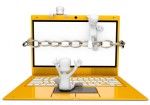 Before proceeding to read this article, it is important that I state something up front. It is essential for you to understand and appreciate that there is no such thing as a totally secure operating system or web browser. While the use of security suites and other complementing products can significantly reduce your risks, they are not magic wands that you can wave to eliminate 100% of your risk. Any product claiming that they can do this should be viewed with great skepticism.
Before proceeding to read this article, it is important that I state something up front. It is essential for you to understand and appreciate that there is no such thing as a totally secure operating system or web browser. While the use of security suites and other complementing products can significantly reduce your risks, they are not magic wands that you can wave to eliminate 100% of your risk. Any product claiming that they can do this should be viewed with great skepticism.
The recent news about the Flashback Trojan attack on Mac computers may have shaken the popular belief that Macs are “immune” to malware. Because of that, this post is for anyone who use a computer, PC or otherwise!
Here are a few easy steps you can take to immediately protect your computer.
Don’t run unfamiliar programs on your computer.
It sounds like common sense, but many of the most prominent attacks have involved spyware and email attachment worms. If you don’t recognize the sender, don’t download its attachments. (And don’t click on the links inside of the emails)
Don’t allow unrestricted physical access to your computer.
If you have sensitive or proprietary information on your computer, allowing other employees or family members to use your computer can lead to potential breaches in your computer’s security. (Especially keep your kids and grandkids off of your computer!)
Don’t use weak passwords.
Use passwords which are difficult for someone to figure out. People frequently use the names of children, pets, anniversary dates or birthdays. Because there seems to be a password needed for everything, it is not uncommon to see many people using the same password for everything. Big mistake! The use of only one password provides a hacker with easy access to a smorgasbord of personal information. If you have to write your passwords down, it is best not to leave them on a post-it attached to the screen of your computer or under the keyboard.. You may chuckle at the absurdity, but it happens more than you think. (When I was repairing computers, the first place that I looked for a user’s password was under the keyboard!)
Don’t forget to regularly patch your operating system and other applications.
Many industry experts believe that most network security attacks would be stopped if computer users would just keep their computers updated with patches and security fixes. Too often, we forget to do this on a regular basis. Remember that every day, new viruses, worms and Trojans are being created and distributed. They are looking for the weaknesses in your computer system. Having outdated software is basically the same as holding the door open and inviting them in for a visit.
Don’t forget to make regular backups of important data
Always keep a copy of important files on removable media such as USB “sticks”, recordable CD-ROM disks or portable hard drives. Store the backups in a location separate from the computer. You may also want to consider services like DropBox or other “cloud” solutions.
In most cases, Windows and Mac desktop and screen-saver passwords provide adequate protection for normal security concerns. However, if you feel more comfortable taking additional security measures consider obtaining a comprehensive security suite.
Selecting an Antivirus Software Suite
The next question is “how do you pick the best product for your needs?” You start by asking yourself a series of questions:
- Do you need password protection for individual files, your desktop, a network, or to block someone’s access to the Internet?
- Is your computer used only by you or do multiple users have access to the computer?
- How many users in total do you expect on your computer?
- What are your system requirements?
- How much do you want to spend?
Once you are able to answer these questions, you can begin to research which security suite will best meet your needs. Product reviews and user reviews provide a great starting point.
Discover more from RealtyTechBytes.com by Jerry Kidd
Subscribe to get the latest posts sent to your email.






